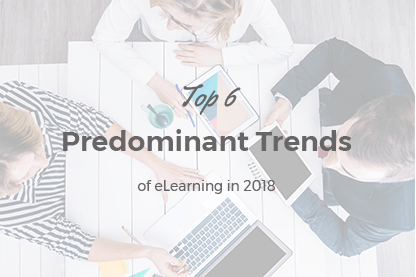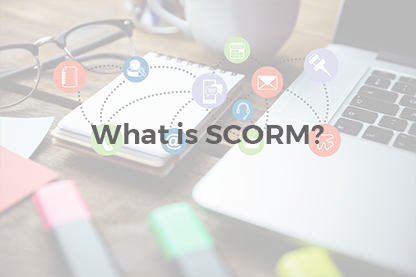When teachers begin to experiment with blended learning, they immediately face a bunch of questions: What are the benefits of blended learning? Which blended learning models should I use? How to make the blended class effective? What hidden rocks should I be aware of? And many others. To clarify the blended learning question we’ve interviewed a Google Certified Teacher and the author of numerous book on the blended learning - Catlin Tucker.
When teachers begin to experiment with blended learning, they immediately face a bunch of questions: What are the benefits of blended learning? Which blended learning models should I use? How to make the blended class effective? What hidden rocks should I be aware of? And many others. To clarify the blended learning question we’ve interviewed a Google Certified Teacher and the author of numerous book on the blended learning - Catlin Tucker.
Educational institutions are looking for solutions to improve learning with technology, as well as address the myriad challenges facing them. Schools are struggling to meet the needs of a wide range of skill levels in a single classroom. Using digital curriculum, adaptive software, and other online resources combined with blended learning models provides an avenue to shift our traditional teacher-centered classrooms to student-centered classrooms. Many educational institutions realize that we must shift students from passive consumers of information to dynamic generators of information if they are going to be college and/or career ready in our increasingly digital and global world.
The blended classroom shifts the focus from the teacher to the student allowing the teacher to focus his/her time on working directly with students. Instead of moving lock-step through a one-size-fits-all lesson, teachers can tailor their instruction to meet the needs of specific students and use technology tools to personalize practice and allow students the freedom to research, communicate, collaborate and create both inside and outside of the classroom. Learning is no longer limited to a specific time or place.
I would argue that there isn't a "typical" blended class. There are so many blended learning models–whole group rotation (also known as lab rotation), station rotation, individual rotation, flipped classroom, a la carte, flex, etc. Depending on the model or models a school or individual teachers use, the classroom will look very different. For example, I frequently use station rotation where my students work in small groups and rotate through a series of online and offline activities. However, I also use whole group rotation where students rotate through online and offline activities as a whole group.
On of my favorite aspects of blended learning is the flexibility it affords. Teachers can claim this term and decide which model or models work for their student population.
Whole group rotation (also known as lab rotation), station rotation, individual rotation, flipped classroom, a la carte, flex, and enriched virtual, etc. Groups like the Christensen Institute have spent a bit of time trying to articulate the various models, but they are constantly evolving.
In my work as a blended learning coach and trainer, I definitely see trends in the models being used at different levels. Elementary teachers tend to use the station rotation model, while secondary teachers tend to use whole group rotation and flipped classroom. At the college level, there are professors experimenting with models, like the flipped classroom, but there is also more use of entirely online courses to supplement traditional face-to-face courses.
The three biggest challenges facing a teacher are the lack of time, lack of support (i.e. ongoing professional development), and lack of access to resources and technology.
One emerging trend I wrote about in my newest book, Blended Learning in Action, was the fact that the proliferation of technology (i.e. BYOD, 1:1 initiatives, mobile technology carts) has allowed us to move away from a lab rotation model where students leave the physical classroom and instead work both online and offline in a classroom using the whole group rotation.
I also think that the ability to collect and aggregate data is helping educators get closer to personalizing learning using a combination of technology and blended learning models.
For those educators just beginning to experiment with blended learning, I'd tell them to think big but start small. Try one piece of technology and one blended learning model. Realize you will make mistakes and that is part of the learning process. It takes time to shift from a traditional to a blended approach. Finally, build your personal learning network. Find people on Twitter, Pinterest, and/or Google+ who are doing cool stuff and follow them. You'll need the inspiration!
About the Author:

Catlin Tucker is a Google Certified Teacher, bestselling author, international trainer, and frequent Edtech speaker, who currently teaches in Sonoma County where she was named Teacher of the Year in 2010.
Catlin’s first book Blended Learning in Grades 4-12 is a bestseller and her second book Creatively Teach the Common Core Literacy Standards with Technology was published in June 2015. Her newest book Blended Learning In Action was published in October 2016. Catlin writes the “Techy Teacher” column for ASCD’s Educational Leadership.
She is active on Twitter @Catlin_Tucker and writes an internationally ranked education blog at CatlinTucker.com.
What to read next?
Introduction to Blended Learning - Interview with Ben Rimes
How to Start Using Technology in the Classroom - Interview with Kyle Pace
Flipped Learning: What is it and how to Make it Work Using LMS









